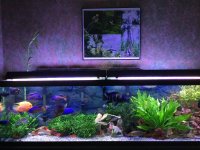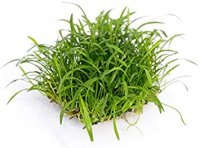So I am going through various planning aspects of my future 1500mm tank, and have been heavily inspired by @Ady34 's beautiful tank (see here: Re-Education . . .) where he has achieved a beautiful planted tank without a single grain of aquatic soil. All stems are planted loosely within the hardscape.
This was a bit of a revelation to me. Whilst I was obviously familiar with epiphyte species like Buce, Anubias, Bolbitis and various fern varieties, along with of course mosses etc - which all happily grow directly onto hardscape - I had never actually considered the possibility of growing stem plants without an active substrate.
From a long term maintenance perspective this appears a really attractive option; being able to just pull up bunches of, or individual, stems, trim 6 inches from the bottom, and stick them back into the hardscape - plus being able to more easily baster-blow and hoover the hardscape to remove detritus without stirring up soil. From an aquascaping perspective it also seems to offer much more flexibility in plant positioning, if they don't have to be uprooted and replanted from/into soil.
So I thought I would start a thread to discuss the possibilities. For example it may even be possible to grow carpeting plants without a substrate - I have seen stainless steel mesh pads of Eleocharis mini for example?
I'd be interested to know peoples thoughts and experiences . . .
This was a bit of a revelation to me. Whilst I was obviously familiar with epiphyte species like Buce, Anubias, Bolbitis and various fern varieties, along with of course mosses etc - which all happily grow directly onto hardscape - I had never actually considered the possibility of growing stem plants without an active substrate.
From a long term maintenance perspective this appears a really attractive option; being able to just pull up bunches of, or individual, stems, trim 6 inches from the bottom, and stick them back into the hardscape - plus being able to more easily baster-blow and hoover the hardscape to remove detritus without stirring up soil. From an aquascaping perspective it also seems to offer much more flexibility in plant positioning, if they don't have to be uprooted and replanted from/into soil.
So I thought I would start a thread to discuss the possibilities. For example it may even be possible to grow carpeting plants without a substrate - I have seen stainless steel mesh pads of Eleocharis mini for example?
I'd be interested to know peoples thoughts and experiences . . .






